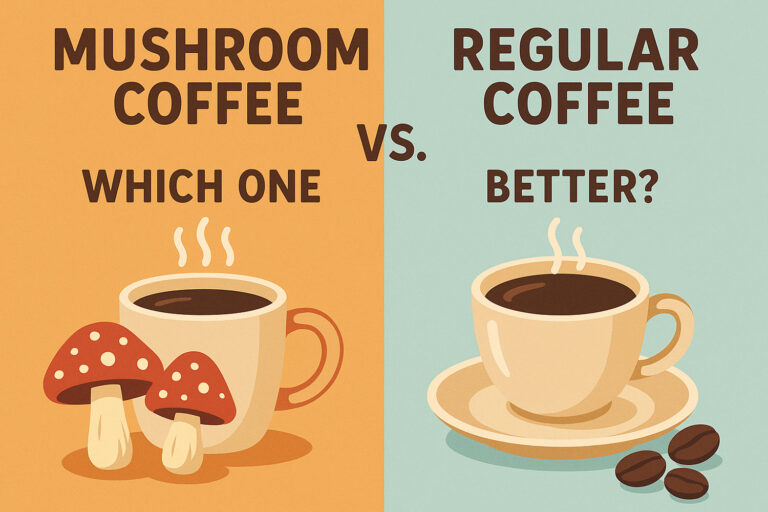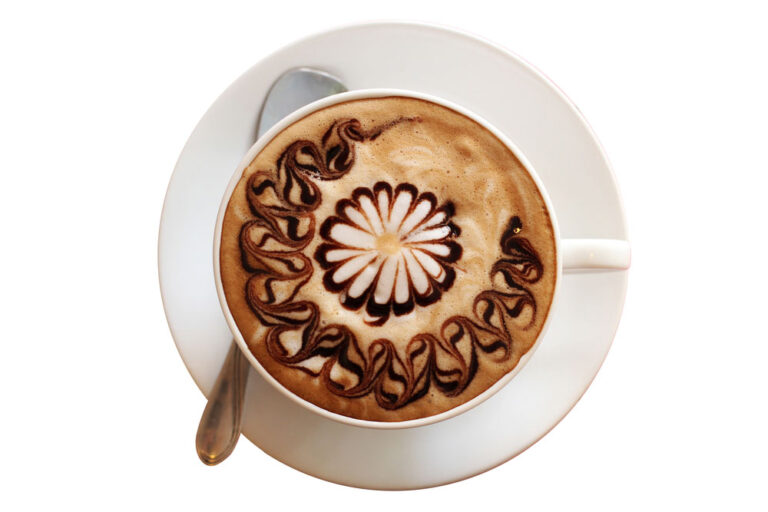Cold Brew vs. Iced Coffee: What’s the Difference?

If you’re a coffee lover, you’ve probably faced the dilemma: cold brew or iced coffee? They both sound refreshing, they’re both served cold, and they both promise that caffeine kick we crave on a hot day—or any day, really. But here’s the thing—they’re not the same. Not even close. Whether you’re sipping something at a trendy café or brewing at home, knowing the difference between cold brew and iced coffee can elevate your coffee game and help you pick the perfect chilled drink for your mood.
So, let’s break it down: what sets these two apart, how they’re made, and—most importantly—which one might win your heart.
What Is Cold Brew Coffee?
Let’s start with cold brew, the smooth-talking darling of the coffee world. Cold brew isn’t just iced coffee’s cooler cousin—it’s a whole different beast. The magic happens in the brewing process, which is slow, deliberate, and—spoiler alert—doesn’t involve hot water.
Cold brew is made by steeping coarse coffee grounds in cold or room-temperature water for an extended period, usually 12 to 24 hours. Yep, you read that right: hours. This isn’t a quick fix; it’s a labor of love. After the steeping is done, the mixture is filtered—often through a fine mesh or paper filter—to remove the grounds, leaving you with a concentrated coffee that’s typically diluted with water or milk before serving.
The result? A bold, velvety drink that’s low in acidity and big on flavor. Because it’s never exposed to heat, cold brew skips the chemical reactions that can make hot-brewed coffee taste bitter or sharp. It’s the kind of drink you sip slowly, savoring its mellow vibes. Plus, that concentrate can sit in your fridge for days (sometimes even weeks), making it a go-to for coffee preppers.
What Is Iced Coffee?
Now, let’s talk iced coffee—the classic, no-fuss option. If cold brew is the patient artist, iced coffee is the impatient friend who just wants to get to the good part. Iced coffee starts with hot coffee, brewed the traditional way—think drip, pour-over, or French press. Once it’s ready, it’s cooled down and poured over ice. Sometimes it’s brewed double-strength to account for the ice melting, but that’s about as fancy as it gets.
The beauty of iced coffee is its speed. You can whip it up in minutes, no overnight planning required. It’s the coffee equivalent of instant gratification: brew, chill, sip. But here’s the catch—because it’s brewed hot, iced coffee keeps some of that familiar bite and acidity you’d expect from your morning cup. When done right, it’s crisp and refreshing, but if the ice melts too fast or the brew’s too weak, you might end up with a watery disappointment.
Cold Brew vs. Iced Coffee: The Key Differences
So, what’s the real difference between cold brew and iced coffee? It boils down to three big factors: brewing method, taste, and time. Let’s unpack each one.
1. Brewing Method
- Cold Brew: Steeped in cold water for 12-24 hours, no heat involved. It’s filtered into a concentrate and usually diluted before drinking.
- Iced Coffee: Brewed hot using standard methods (drip, espresso, etc.), then cooled and served over ice.
The absence of heat in cold brew is the game-changer here. It’s a slow extraction that pulls out different flavor compounds than hot water does, which leads us to…
2. Taste and Texture
- Cold Brew: Smooth, low-acidity, and slightly sweet. It’s less bitter, with a thicker, almost creamy mouthfeel—perfect for those who find regular coffee too harsh.
- Iced Coffee: Bright, bold, and acidic, with that classic coffee bite. It’s closer to your hot brew in flavor, just chilled down. The taste can shift depending on how fast the ice melts, though.
Think of cold brew as a chilled red wine—complex and mellow—while iced coffee is more like a sparkling soda—zippy and straightforward.
3. Prep Time
- Cold Brew: Requires planning. You’re waiting half a day or more, so it’s not ideal if you’re jonesing for a quick fix.
- Iced Coffee: Fast and flexible. Brew it, cool it, drink it—all in under 10 minutes if you’re in a rush.
If you’re the type who loves batch-prepping, cold brew’s your match. If you live for spontaneity, iced coffee’s got your back.
Caffeine Content: Which Packs a Bigger Punch?
Caffeine junkies, this one’s for you. Does cold brew or iced coffee deliver more of that glorious buzz? The answer: it depends.
Cold brew often gets a rep for being caffeine-heavy because it’s a concentrate. A typical batch might use a higher coffee-to-water ratio (like 1:4 or 1:5), and even after dilution, it can clock in at 100-200 mg of caffeine per 8-ounce serving—sometimes more, depending on the beans and steeping time. Iced coffee, on the other hand, varies wildly. A standard 8-ounce cup brewed double-strength might land around 80-150 mg, but if it’s watered down by melting ice, that number drops.
Verdict? Cold brew usually edges out iced coffee in caffeine content, but it’s not a knockout. Your mileage depends on how strong you brew either one.
Which Is Easier to Make at Home?
Let’s get practical—can you DIY these at home without a barista degree? Absolutely.
- Cold Brew at Home: Grab a jar, coarse coffee grounds, and cold water. Mix (a 1:5 coffee-to-water ratio works great), let it sit overnight, and filter it through a coffee filter or cheesecloth. Boom—done. You’ll need patience, but the gear’s minimal.
- Iced Coffee at Home: Brew a pot of coffee like you normally would, let it cool a bit, and pour it over ice. Pro tip: brew it strong to avoid dilution. You can even chill it in the fridge first if you hate watery coffee.
Iced coffee wins for speed, but cold brew’s simplicity (and fridge shelf life) makes it a low-effort champ for busy weeks.
The Cost Factor: Café vs. DIY
At a café, cold brew often costs more—think $4-$6—because of the time and labor involved. Iced coffee? Usually cheaper, around $2-$4, since it’s quicker to churn out. At home, though, they’re both budget-friendly. A bag of coffee beans ($10-$15) can make multiple batches of either, with cold brew stretching further if you dilute the concentrate.
Which Should You Choose?
So, cold brew vs. iced coffee—which reigns supreme? Honestly, it’s about what you’re craving:
- Pick Cold Brew If: You love a smooth, less acidic sip, don’t mind planning ahead, and want something versatile (it’s amazing with milk, syrups, or straight-up).
- Pick Iced Coffee If: You need coffee now, enjoy that sharp, traditional coffee taste, and want a quick refreshment.
Me? I’m team cold brew for lazy summer afternoons, but I’ll whip up an iced coffee when I’m short on time. There’s no wrong choice—just different vibes.
Final Thoughts: Experiment and Enjoy
The beauty of coffee is there’s no one-size-fits-all. Cold brew and iced coffee might share the spotlight as chilled favorites, but their differences—brewing, flavor, prep—make them unique. Why not try both? Brew a batch of cold brew tonight, sip some iced coffee tomorrow, and see which one steals your soul. Got a preference already? Drop it in the comments—I’d love to hear your take!






